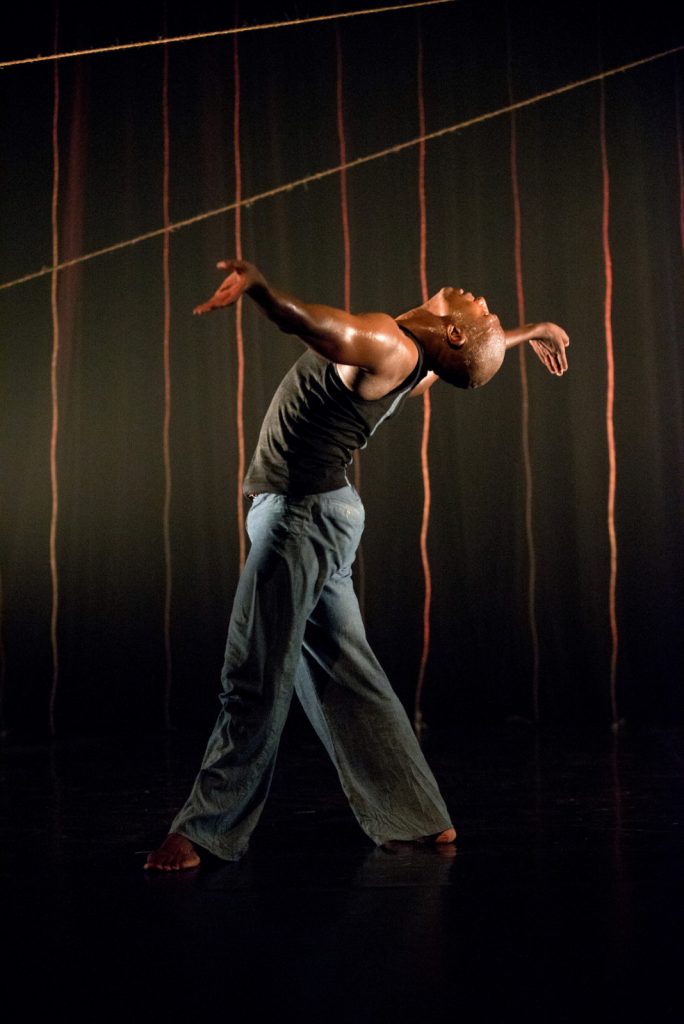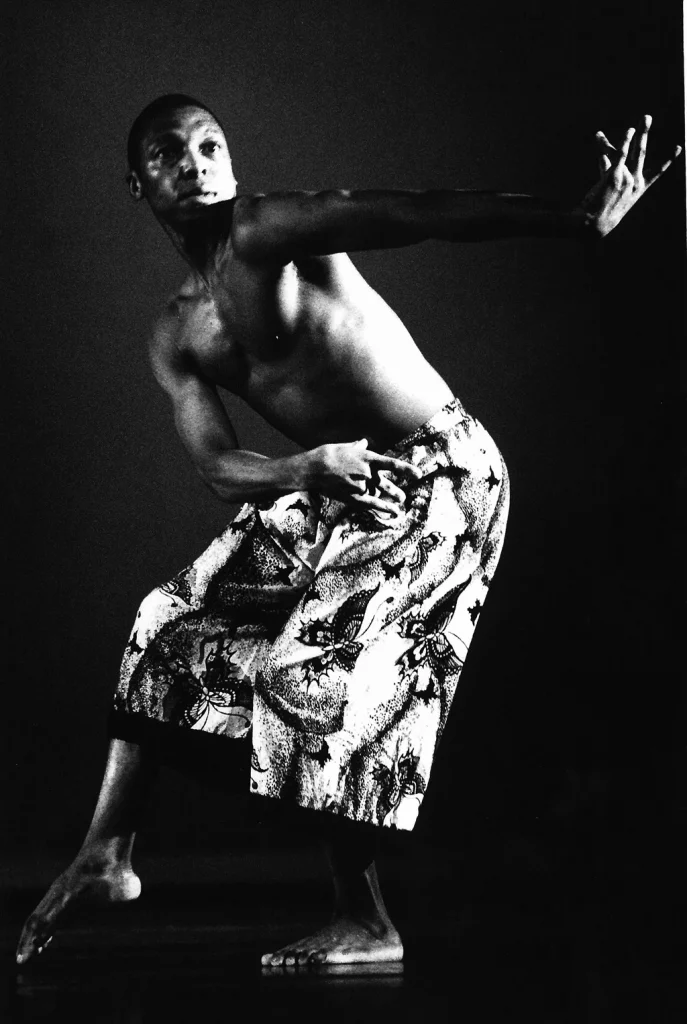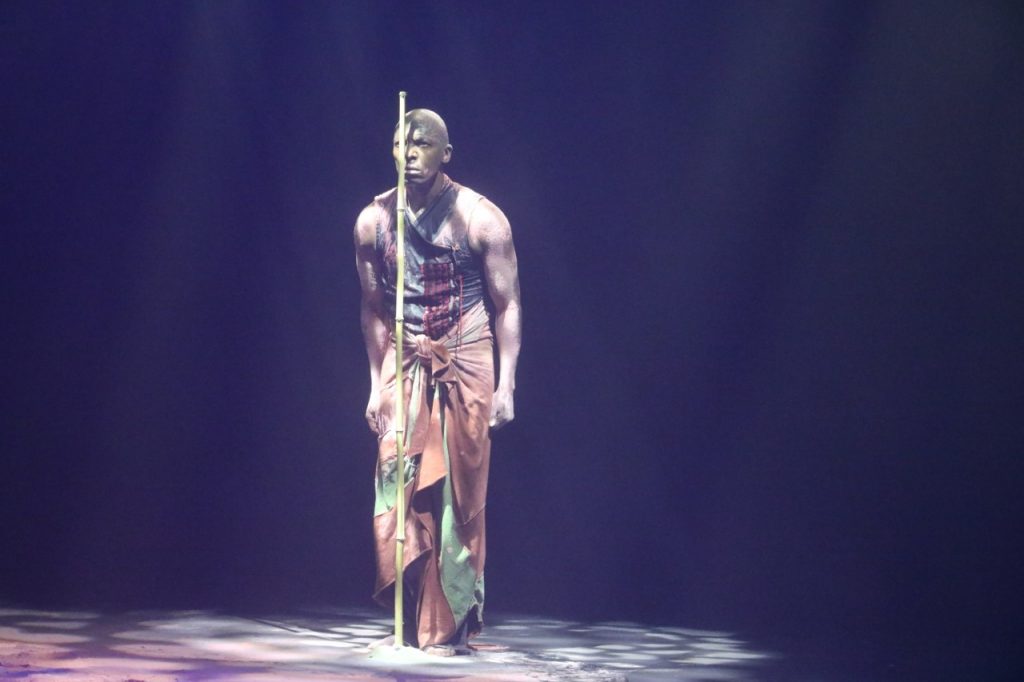To see Vincent Sekwati Koko Mantsoe dance is to witness spirits in choreographic motion. Transfixing, his dance is a submission to ritual and technique and a balance between the two. While dance — as theatrical performance — is naturally a fleeting experience, a Mantsoe showcase leaves a transformative mark.
The legendary, award-winning dancer, choreographer and teacher is being honoured as the 2022 legacy artist for the 24th Jomba! Contemporary Dance Experience in Durban. The dance festival, hosted by the centre for creative arts at the University of KwaZulu-Natal (UKZN), is returning to live programming after two years.
Themed “the (im)possibility of home”, the festival aims to explore a sense of belonging and how this persists and changes through time through dance offerings that negotiate heritage, culture and identity. Mantsoe’s story and 30-year dance career is intrinsic to this.
Dance for the France-based Mantsoe is rooted in the spirit world. Born in Soweto in 1971, and later moving to Vosloorus with his family, he comes from a rich lineage of ubungoma. He remembers the everyday ritual of waking up at 4am to beat the drum and greet the ancestors before the family went about their daily lives.
Participating in traditional rituals of song, dance and drumming that his grandmother, his mother and two of his aunts performed as izangoma inspired Mantsoe’s ethos for dance making. With permission from his family, he later transposed the ceremonial elements of connecting with ancestral spirits for the receipt of knowledge, joy, healing and direction as well as going into states of trance onto stage. Consulting his ancestors is something he does with each creation.

Speaking to Turkish broadcaster TRT World on the delicate approach and grounding process of merging the spiritual with his western training, Mantsoe says, “Dance has taught me self-healing because when I dance, I feel completely healed by the process of what I’m going through.”
“You have to be totally open, free and not congest yourself to one identity, which is just the body moving around a space. The body can divide itself into different dimensions. It can expand, yet I can stay grounded and know exactly where I have to go and when to stop. I dance, first and foremost, for my ancestors,” he says.
Living through apartheid’s oppressive disruption of the 1980s, a teenage Mantsoe and his friend, respected dancer-choreographer, Gregory Maqoma, formed the dance group The Joy Dancers. Influenced by African American culture and infusing it with their traditional dance styles, they experimented and danced to escape and stay out of trouble. After seeing an audition notice in the Sowetan newspaper, both Mantsoe and Maqoma joined the Moving Into Dance (MID) company as part of the Schweppes scholarship programme.
Mantsoe joined the company in 1991 and enrolled in the MID community dance teachers training course in 1992 under the mentorship of Sylvia Glasser and the teaching faculty. He was part of the first groups to perform Glasser’s historic San trance dancing work, Tranceformations, which gave birth to her Afrofusion dance.
Mantsoe created his iconic international award-winning solo Gula for his MID training course end-of-year graduation. Gula, inspired by the pigeons in his grandmother’s Soweto back yard, and the subsequent group work Gula Matari, inspired by the 1970 Quincy Jones record of the same name, is now an Afrofusion classic. It won Mantsoe first prize and an international career at the inaugural Dance Encounters of Contemporary African Dance in Luanda, Angola in 1996.

“Creating Gula was the beginning of a new chapter,” Mantsoe reflects. “The idea was to try and transform myself into a bird. What would happen if I did? We were still living through apartheid. Would I find peace, would I find freedom? I found it in how I express myself.”
“Gula Matari as an ensemble piece was symbolic of collective community – which is what it felt like in the townships in those days. If we were going to protest, we were going to protest together. With it I wanted to try and bring Gula Matari the music into my body in conjunction with the bird. The complexity and simplicity of the music is transporting. I wanted to bring myself into a different world. To fly far away,” says Mantsoe.
Gula and its imagery is in multiple ways symbolic to Mantsoe’s story — representing personal and creative freedoms, as well as being the metaphor for the trajectory of his life. He was invited with MID to perform his work throughout Africa, Europe, Australia, Canada and Asia.
In his travels, he found essences of home and gained a deep affinity with the cultural ways of the aboriginal people of Australia and the Japanese, whose influences form part of his signature. Standout productions from his rich body of work include the 1995 Afro-Asian Hanano Blessing of the Earth as the first FNB Dance Umbrella Young Choreographers’ commissioned work and Men-Jaro as the 1996 Standard Bank young artist award winner for dance, among many others.
After performing and receiving awards in France, he moved there and created his French company Association Noa in 2005. He returns home regularly to see his family and perform and continues to collaborate and teach everywhere else his work takes him. Mantsoe’s geographical divergences, cultural and spiritual connections shape his ideas of home and belonging that resonate with audiences globally. They also give context to the politics of his dance and its activism.
“Contemporary dance is neglected so much in South Africa. We are not taken seriously about how much change we bring into society. With my dance and through my cultural, spiritual and traditional modes, I try to tackle who we are as human beings globally, individually and as communities,” he says.

“The choice to leave South Africa was made through varying emotions. However, my aunt saw it in her visions that I was not going to stay here because I was not meant to be held in chains. I’m a global citizen. I maintain two relationships between two homes, bridging the gap between the European mentality that embraces my work and the South African energy that speaks to who I am.”
Mantsoe will be presenting his newest work, Koma at Jomba! With it he highlights the notion of sacrifice, especially looking at what young people go through when embarking on rites of passage. He zooms in on the psychological, spiritual and physical sides of initiation.
Jomba! will screen his short dance film Cut (part 1) made during lockdown and his two-year process (2021 and 2022) of working with Durban’s Flatfoot Dance Company, as well as the long journey to making Cut (part 2), which will premiere at the festival.
Mantsoe will also present a masterclass. Central to his legacy is the idea of dance as a language of respect.
“What is key for me is to have respect for every aspect of movement I bring into my work. Dance for me is about living the maximum possibility of the past and the present. When I’m on stage, I’m no longer Vincent Sekwati Koko Mantsoe, I represent something larger. I am the past, carrying my ancestors into the present and into the new generation. Understanding and respecting this knowledge is very important. Without tlhompho le botho ba hao (respect and your humanity), you’re just a body,” Mantsoe says.
- Jomba! runs at the Elizabeth Sneddon Theatre, UKZN from August 30 to September 11.